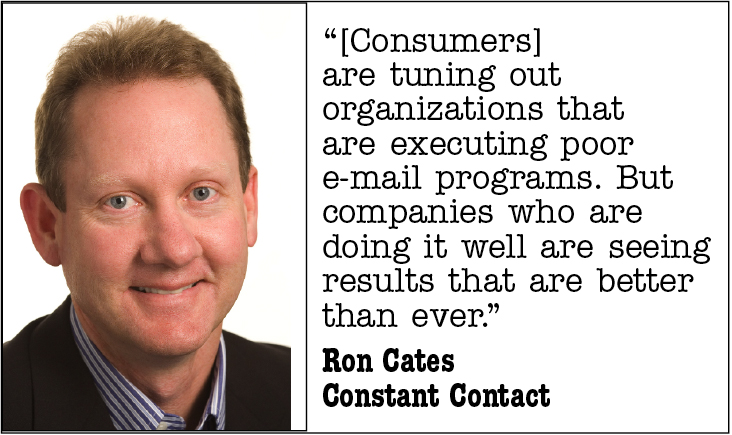The affair that recently ended the career of ex-CIA head David Petraeus will go down in history as one of the biggest scandals perpetuated by a major U.S. public official.
In the end, Petraeus wasn’t brought down by secret wiretaps, sordid photos or a bag of cash hidden in a park (PRN has seen Three Days of the Condor way too many times). It was the grand dame of digital platforms that ruined him—e-mail. Some national pundits were amazed at how the chief of the CIA and his mistress, Paula Broadwell, could so carelessly use e-mails to communicate their personal business.
 |
However, it doesn’t comes as a surprise to Jackie Ford, partner in the Houston office of law firm Vorys, Sater, Seymour and Pease, where she specializes in employment law and privacy issues. Some leaders in most every walk of life suffer from the mindset that regular rules don’t apply to them, says Ford. And the rule that Petraeus and Broadwell should have followed: It’s unreasonable to believe that e-mails are private. “Yet that’s the way many people commonly communicate with their friends,” she says.
Yet it’s not just former spooks who use e-mail incorrectly. PR professionals are guilty of violating basis e-mail communications tenets in reaching their target audiences. For example, a 2012 study of more than 2,700 e-mail marketing messages by MarketingSherpa finds that two-thirds of e-mails sent were not relevant to their audiences. What’s more, a fifth of them were sending e-mails without a clear purpose.
 |
E-mail oversights like that irks Ron Cates, director of new market development at Constant Contact, an e-mail communications company, particularly when consumers are becoming more differentiating with the communications platforms they use. “[Consumers] are tuning out organizations that are executing poor e-mail programs,” he says. “But companies who are doing it well are seeing results that are better than ever.”
And what is it that organizations don’t do well with their e-mail outreach?
• They’re not targeting audiences correctly. “A few years ago I bought two cars,” Cates says. “A week later, I received an e-mail from the dealer imploring me to buy a new car from them. Organizations should create and constantly update multiple lists of customers.”
• Many e-mails are not easily read. Cates says organizations are getting fancy with e-mails—often, too fancy—with images that completely block the body type. And while many people use Microsoft Outlook (20.14% of e-mailers use it— Campaign Monitor, Sept. 2012) they tend to use the Outlooks preview pane feature, which makes an image-heavy e-mail even more difficult to read.
• Long subject lines still prevail. Mobile usage and Twitter are changing this bad habit, Cates says, but not soon enough. He recommends 40 characters or less, and if you’re pushing a brand, put it up front in the subject.
• Communicators do too much “cute and clever.” If your audience is hip, this might work. “But if my puppy is sick, nothing will be cute and clever,” Cates says. Usability must take presence over design—and fonts matter, too.
• E-mails are not linked socially. Big increases in engagement are being reached when an e-mail message is made sharable via social media. “Engagement rises 40% to 60% by adding a button to an e-mail,” Cates adds.
E-MAIL 3.0
The social media element is now critical to e-mail outreach success. At the National Fire Protection Association (NFPA), adding social media buttons, such as LinkedIn, Facebook and Twitter, to the e-mail mix has allowed the nonprofit to segment its audiences better. “We look at these channels and find out which people go where,” says Lorraine Carli, VP of communications, NFPA.
Tom Jelen, director of online communications at the American Speech-Language-Hearing Association (ASHA), says social media and another growing platform—mobile—are changing the face of the ASHA’s e-mail program.
“Both have made us consider our content more carefully,” Jelen says. Now, shorter subject lines and simpler sentences are the norm.
Jelen says that e-mails via mobile will get even more interesting as people migrate from browsing mode and get more comfortable with completing transactions with their smartphones.
WHAT’S THE FREQUENCY?
Frequency of e-mails also stumps communicators. It’s a question that invariably comes up with clients. Cates’ answer: How often you send relates to the strength of the relationship. He recommends at least segmenting audiences into “serious” and “casual.” Serious customers could receive an e-mail every week; casual customers less frequently.
And everyone has to opt-in. “Some communicators don’t understand reverse marketing, and have applied traditional rules to e-mail,” Cates says. “If you send stuff without permission, you will be hated, and those people will let other people know.”
The ASHA seems to have gotten this message and is very targeted in its e-mail approach, always sending out to certain subsets of members and never sending out blanket messages, ASHA’s Jelen says.
IRONCLAD FUTURE
In the future, the permission-based aspect of e-mail will become more ironclad, says Cates. Thus, it’s important that you must have something interesting to say in your e-mails that will command the audience’s attention. “Today’s consumers are smart,” he says. “They want something in exchange for their attention, and it’s not ‘buy this,’ it’s tips, insights and links to more information on their website.” To not take this advice and run with it is, well, scandalous.
As for the Petraeus affair, Ford feels there’s a lesson there that PR pros should take to heart: “Work with HR and IT to dig up your old e-mail policies and get them up to date,” she says. “And make sure employees—and leadership in particular—follow the rules.” PRN
Contact:
Jackie Ford, [email protected]; Ron Cates, [email protected]; Lorraine Carli, [email protected]; Tom Jelen, [email protected].
Follow Scott Van Camp: @svancamp01
